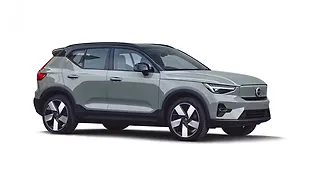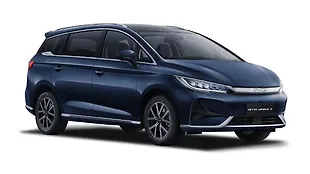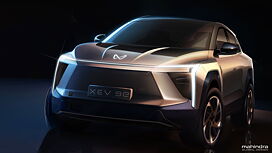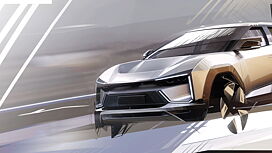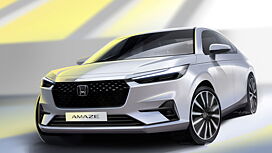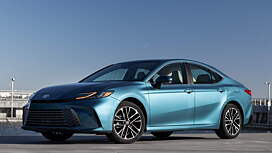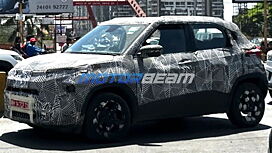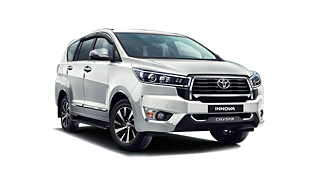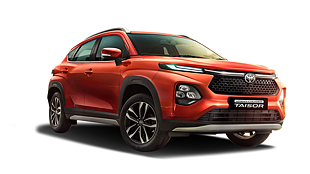What is it?

Toyota Fortuner fans rejoice! The brand new version of the brawny SUV has finally reached our shores and if initial impressions are anything to go by, then it is safe to say that Toyota has managed to improve on the old car in every aspect. The Fortuner has a cult following and for a good reason. Its butch looks, rugged ladder frame, go anywhere capability and bulletproof reliability made it an instant hit. But now, seven years down the line the Fortuner was showing its age and fresh competition in form of the impressive new Ford Endeavour meant, sales figures for the Toyota SUV had started to decline. Now though, its replacement is here. Meet the new for 2016 Toyota Fortuner. And, if looks are anything to go by, it was certainly worth the wait.
Where the old SUV was all about tough looks, the new Fortuner looks more sophisticated and modern. The new Fortuner’s high bonnet gives it an intimidating presence. The large chrome grille looks macho and the terrific-looking all-LED headlights with daytime running lights give it great visual drama. The flared wheel arches and large 18-inch wheels dominate the profile. At the rear the design is more generic and the thick chrome strip joining the tastefully designed LED tail lamps gives it a Lexus like appearance.
The new Fortuner shares its underpinnings with the Innova Crysta, which is a heavily modified version of the original ladder-frame chassis. To make the new ladder-frame extremely rigid, Toyota has added more cross-members and additional welding points. On the flip side this has made the chassis much heavier than before and despite the weight saving through using high tensile steel for the body, the 2016 Fortuner still weighs nearly 200kg more than the old car.

How is it on the inside?

Toyota has completely revamped the design philosophy for the new Fortuner’s interior. The new cabin feels spacious, open and crisply styled. The dashboard is well detailed and the swooping dash top adds a sense of sophistication. Sitting miles above the road, you will feel like the master and commander of all happenings around you. As in any Toyota, the front seats are comfortable, there’s good space and the sense of security you get is quite something.
Despite the modern design, the cabin’s functionality hasn’t taken a hit and everything from the touchscreen to the aircon controls are tilted upwards for ease of use. The blue backlit instrument cluster is easy to read and the digital centre screen hosts a comprehensive trip computer. The insides are well built and fitted, though the textures and surfaces shout ‘durability’ louder than ‘luxury’. Although the leather wrapped bits like the upper glove box and instrumentation hood feel nice, the lack of soft touch plastics is a big let-down.
The touchscreen, which is easy to use, looks old-school courtesy pixelated display, ageing graphics and blue feather touch buttons surrounding the screen. Also on a car this expensive, you don’t even get Apple CarPlay or Android Auto (which is available on many cars under Rs 10 lakh). The system does host loads of functions like satellite navigation, eco display (which shows how efficiently you are driving), and Bluetooth telephony and music system controls.

Like the front, the rear seats are comfortable too. You sit high and the large windows leave you with an airy feel; despite the all-black interiors. The adjustable backrest, ample thigh support and good knee room make the new Fortuner a good bet as a chauffeur driven car too. On the downside, headroom in the second row is just about enough and the aircon ducts passing through the centre of the ceiling means, headroom for the centre passenger is further compromised. This makes the second row bench good only for two full sized adults. The third row is more or less like the old car and the combination of the high floor and low seat makes it comfy only for short stints.
In terms of features, the 2016 Fortuner is decently equipped. But, it does miss out on things like multi-zone climate control, auto park assist, sunroof, and auto wipers compared to the new Ford Endeavour. Thankfully, as far as safety kit is concerned, the new Fortuner in its top Sigma variant comes with seven airbags, ABS, brake assist, traction control, ESP and hill-start assist.
How does it drive?

This new Fortuner comes with a 2.8-litre diesel engine similar to the one in the recently launched Innova Crysta. Although it makes similar power of 174bhp as the Innova, the torque rating of 420Nm for the manual and 450Nm for the automatic are significantly higher than the latter.
The extra torque is welcome because the Fortuner is 185kg heavier than its MPV sibling. We drove the manual transmission first and came away very impressed. This motor feels better in every way than in the older car and outright performance and refinement has improved drastically. But, it’s not the outright performance, but rather the manner in which the engine delivers its power that is at the heart of the new Fortuner’s appeal.
The torquey motor is so responsive that it makes the heavy Toyota feel light on its feet and the engine pulls without fuss from as low as 1,500rpm with a stronger surge coming in post 2000rpm. The mid-range punch of this motor is superb and you feel there’s always surplus power. Overtaking is effortless and the Fortuner sails past slow-moving vehicles with utmost ease.
It’s not an engine that likes to be revved though and it’s best to shift up before 4,000rpm to land back in the meat of the powerband. Toyota is offering driving modes too and all of them are usable in any given condition. In Eco mode there is a slight hesitation from the motor at low revs as you can feel a step in power around 2000rpm. Switch to normal mode and the power delivery becomes linear and in Sport mode the motor feels very responsive and eager.

The gearshifts on the 6-speed manual transmission aren’t the most precise and have long throws. But, the iMT feature completely changes the driving experience for the better. iMT basically smoothens the gear selection by automatically setting the optimal engine revs to allow the smoothest possible gear changes. Although there will be a fuel efficiency penalty, it is well worth the compromise and you can always switch it off when not needed.
The automatic gearbox on the other hand is bit of a mixed bag. The gearbox is best left to its own device as there’s not much point in you hurrying it through the gears in tiptronic mode. It’s slow to respond to taps on the gear lever and slow to upshift. Also the automatic Fortuner tends to free wheel as soon as you go off throttle, which makes driving downhill a stressful affair. Yes, you can have some engine braking when in manual mode, but here too its lasts for about a few seconds before it loses resistance in favour of free-wheeling; also read as increased fuel efficiency.
Like the old car you still get a ride that is compromised thanks to the non-independent rear suspension and stiff springs. Its centre of gravity remains high too. As a result, the new Fortuner feels lumpy over uneven tarmac and there’s pronounced up and down motion, especially at low speeds. At higher speeds, the big wheels and the suspension do a better job, but the ride still remains jiggly and borderline uncomfortable.

Except for the steering, which has good weight and is rather direct, the handling is quite old school off-roader like. It rolls around in corners, but it surprisingly feels manageable and most importantly it doesn’t feel massive from behind the wheel. There is plenty of grip from the wide tyres and the upgraded all round ventilated disc setup gives it good stopping power.
The new Toyota Fortuner in the 4x4 guise still gets low range for the occasional mud plugging duties. But, unlike the old permanent AWD system, the new one also has a 2WD mode. The new 4x4 hardware though isn’t as sophisticated as the old system. Where the old car had the ability of splitting torque between the front and the rear wheels depending on traction, the new one gets a fixed 50:50 split and relies on braking the wheel with less traction and continuing to send power to the wheels with most traction. We will be able to tell you how well this simpler system works only after taking it for a proper off-road drive.
Should I buy one?
As a product, the new Fortuner is a huge jump over the older car. It feels more premium, has a potent diesel engine, is spacious, and quality and cabin ambiance has taken a big jump forward too. On the downside the stiff kneed ride is a bit of a letdown and the cabin quality though consistent is not what you expect of a car costing Rs 31.12 lakh (ex-Delhi) in the top 4x4 diesel automatic trim. The fact that it is more than a lakh expensive and isn’t as well equipped as the new Endeavour further marks it down. But, what you do get instead is an SUV that gives you peace of mind like no other, will be as reliable as your pet dog, and has loads of in-your-face appeal. So, even though the new Fortuner might not be the perfect SUV, it is one you can’t go wrong with.

Where does it fit in?
In the broad sense, anything with seven seats, body-on-ladder construction, and a near Rs 30 lakh price should be considered as competition to the new Fortuner. However, given how far this new Toyota has moved the goal post in this class of SUVs, we can comfortably discount the likes of the Mitsubishi Pajero Sport. The real competitor to the 2016 Fortuner is the new Ford Endeavour. And, given the proximity in pricing, stature, road presence and in fact driving appeal, the new Fortuner might not be able to steamroll to the top as easily.

Pictures by Kapil Angane

![Toyota Fortuner [2016-2021] Exterior Toyota Fortuner [2016-2021] Exterior](https://imgd.aeplcdn.com/642x361/cw/ec/25703/2016-Toyota-Fortuner-83422.jpg?v=201711021421&wm=1&q=80)
![Toyota Fortuner [2016-2021] Interior Toyota Fortuner [2016-2021] Interior](https://imgd.aeplcdn.com/642x361/cw/ec/25703/Toyota-Fortuner-Interior-83519.jpg?v=201711021421&wm=1&q=80)
![Toyota Fortuner [2016-2021] Exterior Toyota Fortuner [2016-2021] Exterior](https://imgd.aeplcdn.com/642x361/cw/ec/25703/Toyota-New-Fortuner-Exterior-83446.jpg?v=201711021421&wm=1&q=80)
![Toyota Fortuner [2016-2021] Exterior Toyota Fortuner [2016-2021] Exterior](https://imgd.aeplcdn.com/642x361/cw/ec/25703/Toyota-New-Fortuner-Exterior-83447.jpg?v=201711021421&wm=1&q=80)
![Toyota Fortuner [2016-2021] Exterior Toyota Fortuner [2016-2021] Exterior](https://imgd.aeplcdn.com/642x361/cw/ec/25703/Toyota-Fortuner-Exterior-83528.jpg?v=201711021421&wm=1&q=80)
![Toyota Fortuner [2016-2021] Interior Toyota Fortuner [2016-2021] Interior](https://imgd.aeplcdn.com/642x361/cw/ec/25703/Toyota-New-Fortuner-Interior-83433.jpg?v=201711021421&wm=1&q=80)
![Toyota Fortuner [2016-2021] Interior Toyota Fortuner [2016-2021] Interior](https://imgd.aeplcdn.com/642x361/cw/ec/25703/Toyota-New-Fortuner-Interior-83437.jpg?v=201711021421&wm=1&q=80)
![Toyota Fortuner [2016-2021] Interior Toyota Fortuner [2016-2021] Interior](https://imgd.aeplcdn.com/642x361/cw/ec/25703/Toyota-Fortuner-Interior-83517.jpg?v=201711021421&wm=1&q=80)
![Toyota Fortuner [2016-2021] Image Toyota Fortuner [2016-2021] Image](https://imgd.aeplcdn.com/272x153/n/cw/ec/19812/fortuner-exterior-right-front-three-quarter-2.jpeg?q=80)











